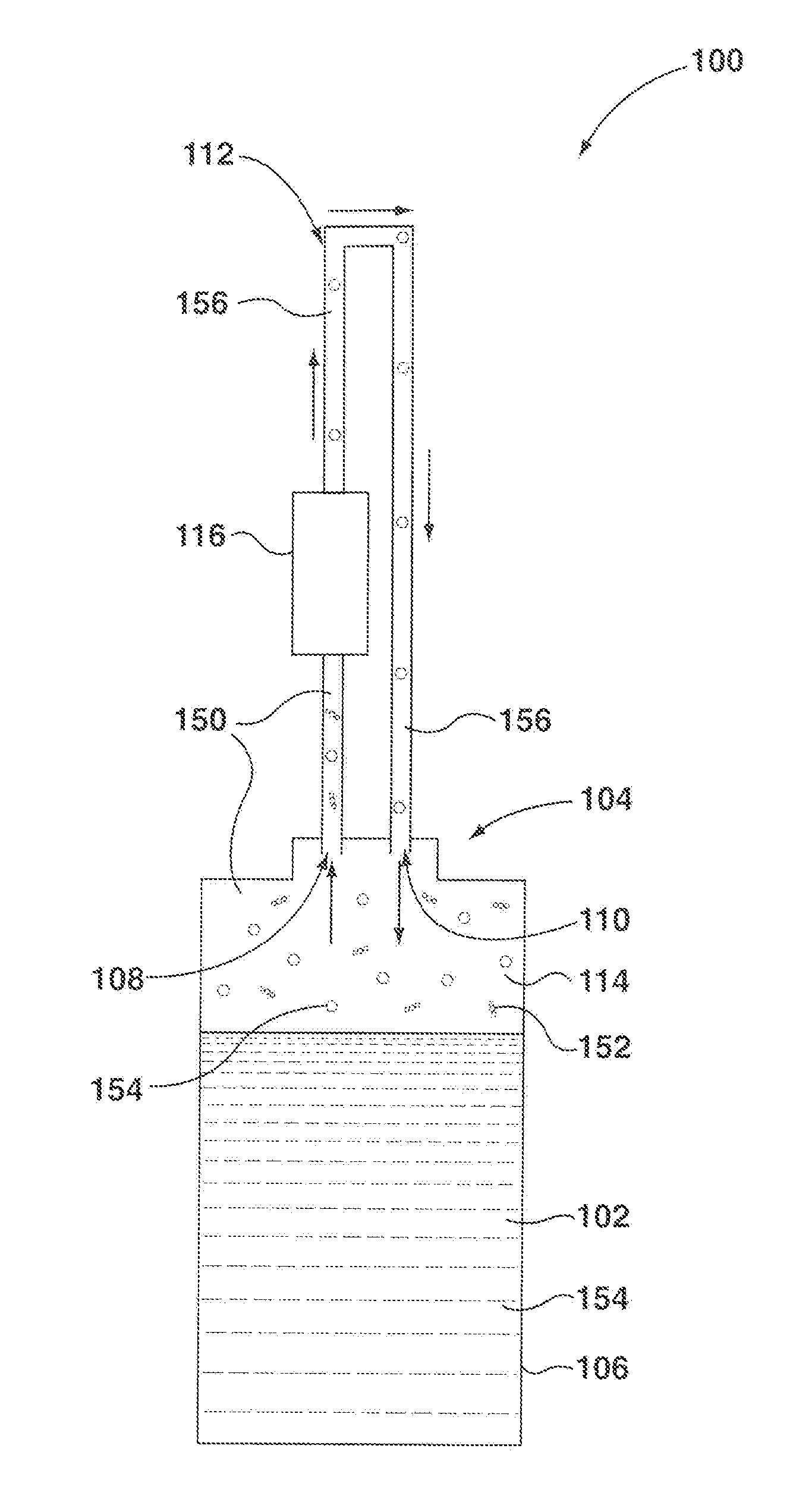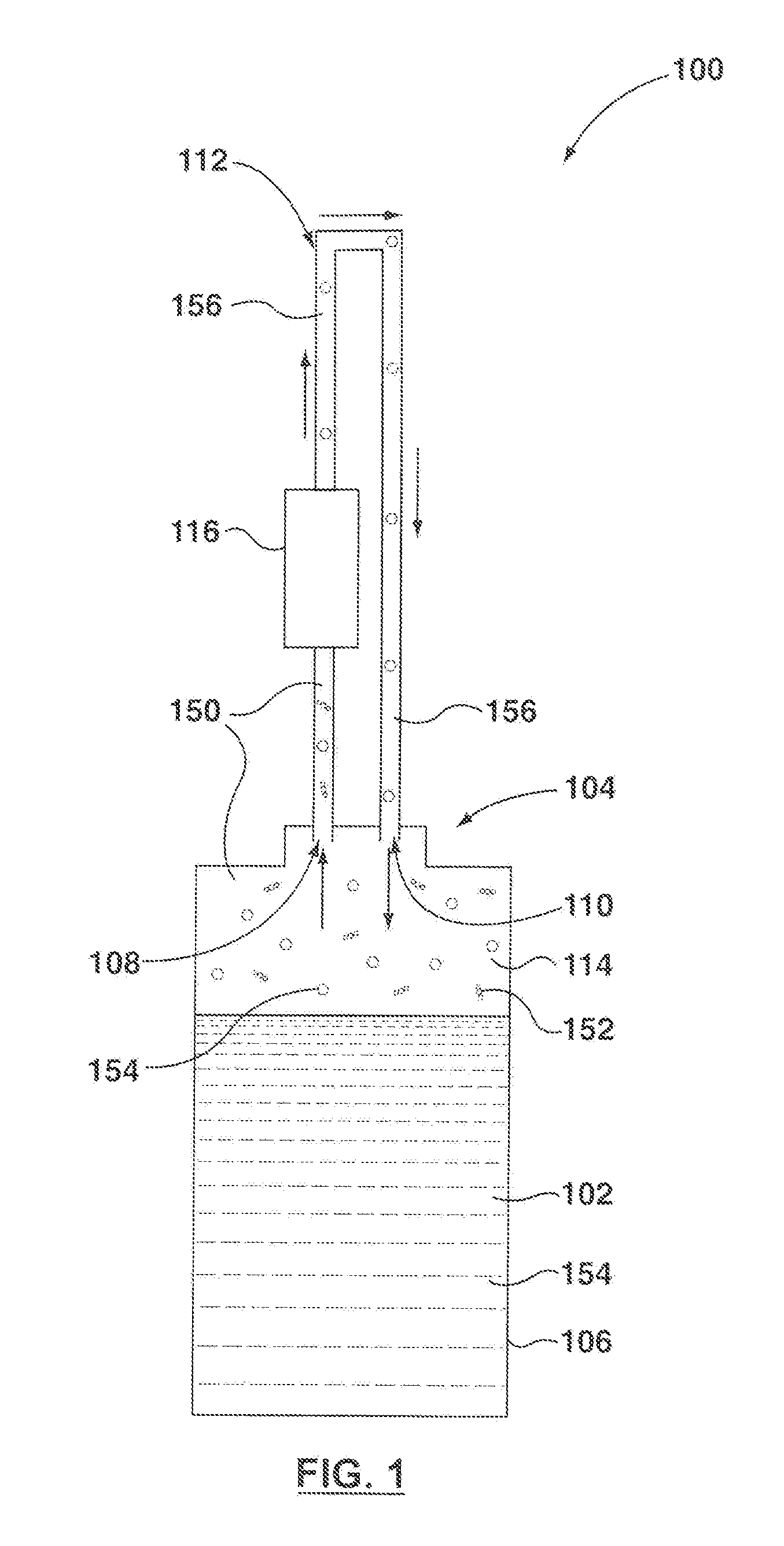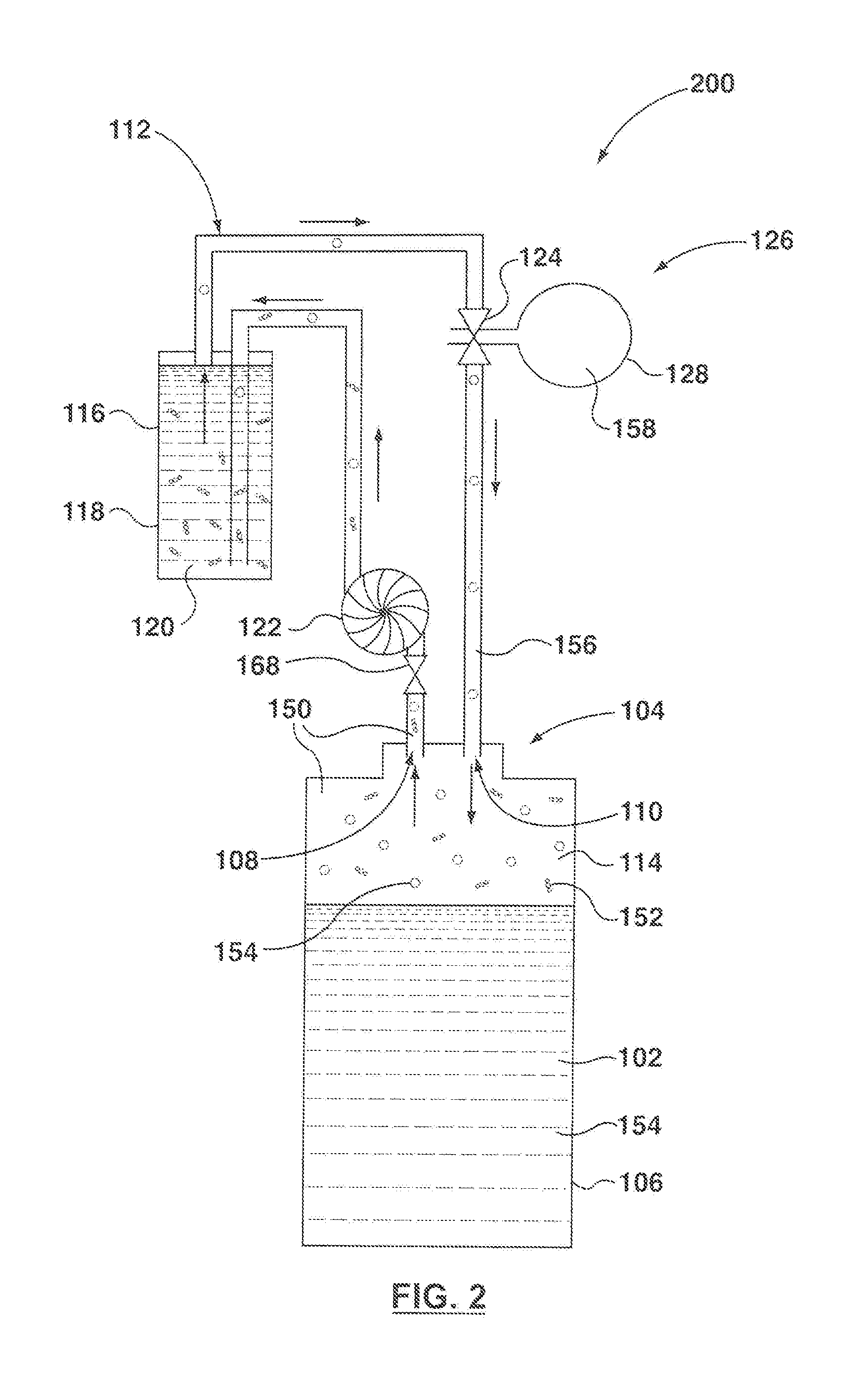Apparatus and method for preserving the aroma of a fermentable beverage
a fermentable beverage and aroma technology, applied in the direction of liquid degasification, separation processes, venting devices, etc., can solve the problems of more volatile aroma compounds that are relatively more susceptible to carbon dioxide stripping, higher gas/liquid partition coefficients, and relatively easy to strip carbon dioxid
- Summary
- Abstract
- Description
- Claims
- Application Information
AI Technical Summary
Benefits of technology
Problems solved by technology
Method used
Image
Examples
experiment # 1
Experiment #1
[0112]A first experimental embodiment is discussed below with reference to FIG. 9 and exemplary fermentation apparatus 700.
[0113]After crushing and pressing the juice from Pinot Gris grapes, fermentation was started with ICV-D47™ yeast (sold by Lallemand™ Inc., Montreal, Quebec, Canada), which is a yeast known for producing wines with typically well-regarded aroma. A portion of the juice, identified as the control juice, was placed in a fermentation container. Fermentation of the control wine was conducted in a sealed container with an airlock to allow carbon dioxide gas to freely escape while limiting oxygen exposure. It was noticed that wine juice aromas were coming out of the airlock and the carbon dioxide gas was carrying away the very aromas desired in the finished control wine.
[0114]Referring to FIG. 9, approximately 48 hours after fermenting the juice in the control container (as outlined in the paragraph above), a portion of the control juice (one litre) was dra...
experiment # 2
Experiment #2
[0115]A second experimental embodiment is discussed below with reference to FIG. 10 and exemplary fermentation apparatus 800.
[0116]Pinot Gris grapes were picked and pressed to yield 52 litres of juice. This pressed juice had the following initial properties: Brix of 22.2° (22.2 g of sucrose per 100 g of solution), specific gravity of 1.100 using a hydrometer corrected to 15.6° Celsius with water as the reference solution, titratable acidity of 6.5 grams / litre, and pH of 3.30. Potassium metabisulfite, in a quantity of 2.2 grams, was added to the juice to obtain a molecular sulfur dioxide content of 0.80 parts per million.
[0117]The pressed juice was allowed to settle for 30 hours under a controlled, cool climate in which the surrounding temperature was held at approximately 10° Celsius.
[0118]The settled juice was then racked into a clean container into which the following ingredients were added to treat the juice: 14.7 g of OptiWHITE™ (sold by Lallemand™ Inc., Montreal, Q...
experiment # 3
Experiment #3
[0138]A fixed-site carrier membrane that functions at a relatively low pressure differential was used for Experiment #3. Fixed-site carrier membranes are described, for example, in United States Patent Publication No. 20080078290, which is hereby incorporated by reference in its entirety. This membrane is highly selective to carbon dioxide gas relative to larger desirable aromatic fluid compounds. This membrane is able to function at room temperature and in the presence of water vapour. The membrane transports carbon dioxide gas by simple diffusion from the feed side to the permeate side of the membrane. In addition, the membrane surface on the feed side of the membrane is coated with polyvinylamine. When the carbon dioxide gas contacts the feed side of the membrane, the polyvinylamine reacts with the carbon dioxide gas to produce bicarbonate on the feed side of the membrane. The bicarbonate then migrates to the permeate side of the membrane. On the permeate side, the b...
PUM
| Property | Measurement | Unit |
|---|---|---|
| Partial pressure | aaaaa | aaaaa |
| Pressure | aaaaa | aaaaa |
| Flow rate | aaaaa | aaaaa |
Abstract
Description
Claims
Application Information
 Login to View More
Login to View More - R&D
- Intellectual Property
- Life Sciences
- Materials
- Tech Scout
- Unparalleled Data Quality
- Higher Quality Content
- 60% Fewer Hallucinations
Browse by: Latest US Patents, China's latest patents, Technical Efficacy Thesaurus, Application Domain, Technology Topic, Popular Technical Reports.
© 2025 PatSnap. All rights reserved.Legal|Privacy policy|Modern Slavery Act Transparency Statement|Sitemap|About US| Contact US: help@patsnap.com



